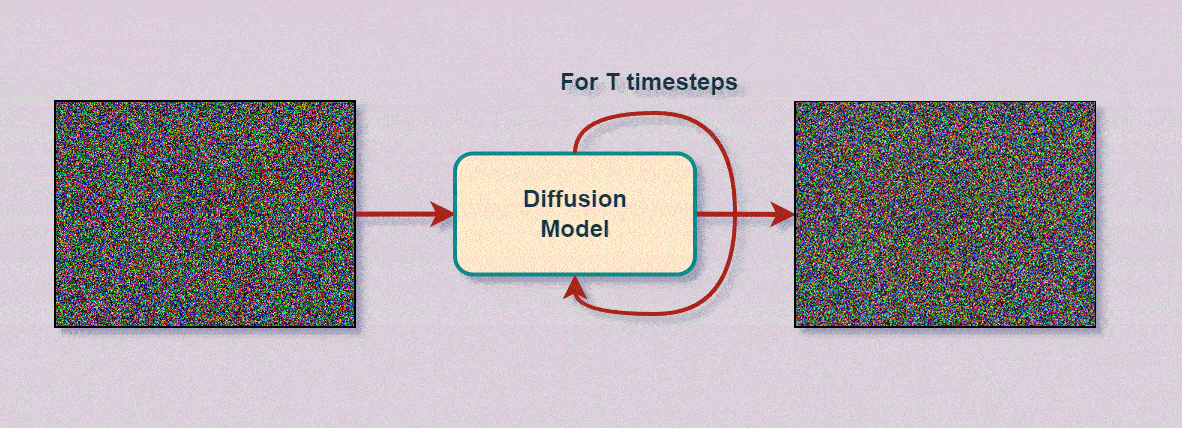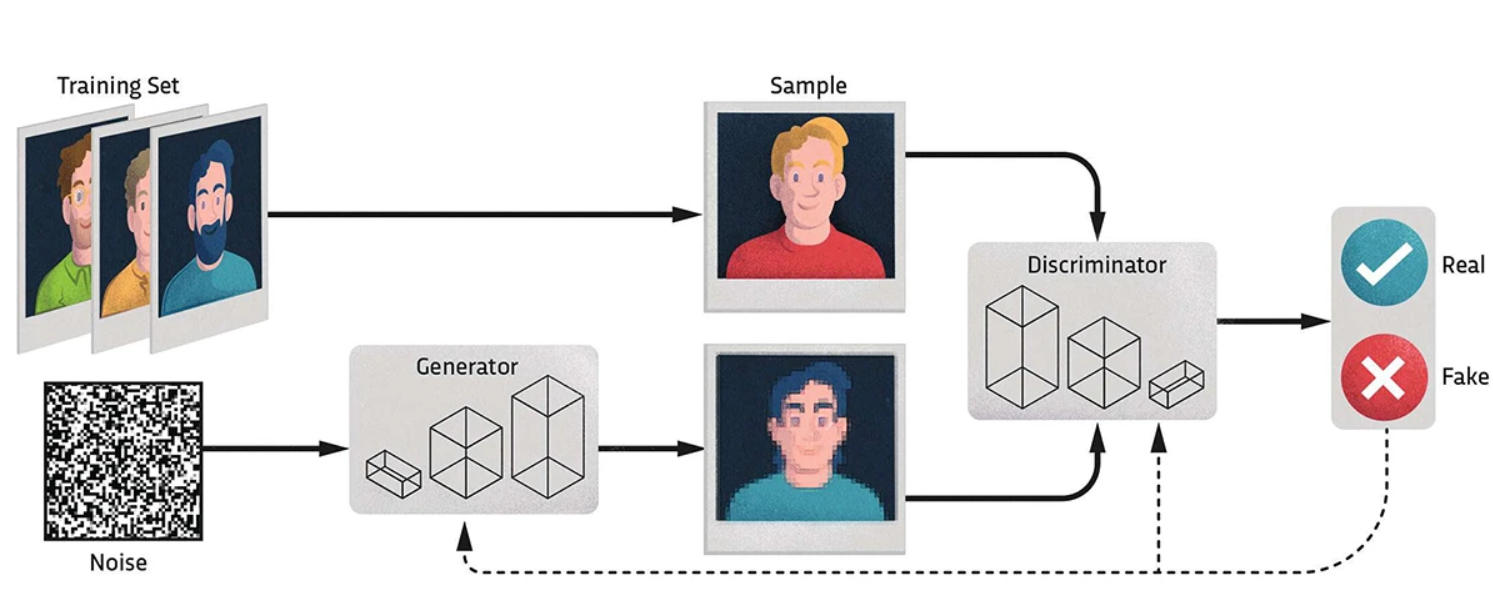Introduction
In recent times, DALL-E-2, Mid-Journey, Stability.ai, and many other platforms have gone viral among the mainstream public with their astonishing image-generating capabilities with text prompts. And all these platforms have one thing in common, they are making use of generative deep learning models known as Diffusion. However, before the Diffusion model became a global phenomenon, there was another class of generative models called GANs (Generative Adversarial Networks) that had been the talk of the town. Although GAN was quite popular within the AI community and also garnered media attention with its image-generating capabilities, the general public hardly got their hands on it.
In this article, we will do a detailed comparison between Diffusion Models vs GANs (Generative Adversarial Networks) to uncover the technical nitty-gritty of the two models.
Diffusion Models

What are Diffusion Models
Diffusion models are types of Generative models that use probabilistic processes to transform data from a simple distribution to a more complex target distribution. It iteratively refines the initial random distribution, where in each step it removes the noise from the data and eventually ends up creating a realistic sample of data. This process of denoising data in each step is what is known as “Diffusion”.
Advantages of Diffusion Models
The advantages of diffusion models are as below –
- They can generate high-quality sharp data samples with detailed features.
- They are trained using maximum likelihood estimation, which is a well-understood optimization problem.
- They can be used to generate both images and audio.
Disadvantages of Diffusion Models
The disadvantages of Diffusion models are as below –
- Training a diffusion model can be a slow and computationally expensive process.
- They require a large amount of data for effective training.
Generative Adversarial Networks (GANs)

What are GANs
GANs consist of two neural networks – i) Generator and ii) Discriminator. The Generator tries to create synthetic data whereas the Discriminator tries to distinguish this synthetic data by comparing it with real-world data. During the training process, Generator improves its ability to create real-like fake data, and Discriminator increases its efficiency to identify synthetic fake data.
Advantages of GANs
GANs have the following advantages –
- GANs can synthesize high-quality data which includes both images and audio.
- GANs are relatively faster to train and can use a variety of loss functions such as Wasserstein loss, and Hinge loss functions.
Disadvantages of GANs
GANs can have the following disadvantages –
- Training GANs can be a difficult task because both Generator and Discriminator may get stuck in a local minimum.
- GANs are sensitive to the choice of hyperparameters, such as learning rate and batch size.
- They also suffer from something called mode collapse, in which the generator produces just a small variety of data that is not as diverse as real-world data.
Comparison between Diffusion Models vs GANs
Now that we have done a small overview let us do a point-wise comparison between Diffusion Models vs GANs –
1. Training Methodology
GANs consist of two neural network – i) Generator and ii) Discriminator, in which the Generator synthesize real like fake data and Discriminator tries to identify fake data from the real. Over many iterations, the Generator starts producing high-quality real-like fake data to fool Discriminator. On the other hand, the Diffusion model starts with random noise of data and over many iterations, it keeps on denoising the data to produce high-quality synthetic data.
2. Training Failure
With GANs there are chances that it may not converge during the training process because Generator or Discriminator network can get stuck in local minima. On the other hand, Diffusion models are trained using maximum likelihood estimation that usually converges well.
3. Hyperparameter Tuning
GANs have various hyperparameters to control learning rate, epochs, balance between generator and discriminator losses, etc. Hyperparameter tuning for GANs can be a challenging and time-consuming process. On the other hand, Diffusion models have fewer hyperparameters and are relatively straightforward to tune during the training process.
4. Quality of Generated Data
Although Both Diffusion Models and GANs can generate high-quality samples, Diffusion Models are better at generating sharp and detailed features. However, GANs can suffer from mode collapse, where the generator network fails to generate diverse real-like data.
5. Applications
Bothe GANs and Diffusion models have profound applications in areas of image, audio, and video generation, data augmentation, image inpainting, outpainting, etc.



